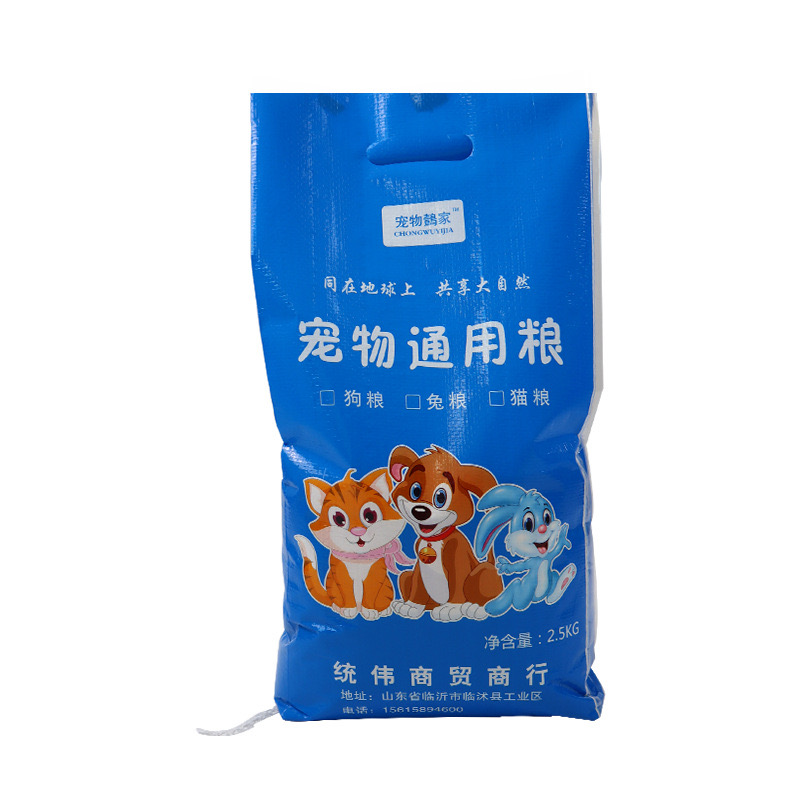
Introduction
Q: How do Printed BOPP Woven Bags achieve superior moisture resistance while maintaining print quality?
A: Advanced moisture-proof designs—such as PE/OPP liners, polymer coatings, and BOPP outer laminates—combine with high-definition flexographic printing to deliver durability, aesthetics, and compliance with global standards like ASTM D1709 and ISO 2231.
Printed BOPP Woven Bags are revolutionizing industries from agriculture to chemicals by offering customizable branding and robust moisture protection. This report explores cutting-edge anti-humidity technologies, supported by data, case studies, and compliance frameworks, to demonstrate how BOPP Woven Bags meet evolving market demands.
Part 1: Moisture Resistance Technologies for BOPP Woven Bags
1. Inner Liner Films: PE, BOPP, and Composite Materials
Inner liners act as primary moisture barriers. For example:
- PE Liners: Low-density polyethylene (LDPE, 50–80μm) is heat-sealed to Printed Woven Bags for granular fertilizers, achieving <0.5% moisture permeability (ASTM E96).
- OPP Liners: Biaxially oriented polypropylene (BOPP) liners with 20μm thickness reduce water vapor transmission (WVTR) to 5g/m²/day, ideal for hygroscopic pharmaceuticals (Pharma Packaging Journal, 2022).
Case Study: A Thai rice exporter reduced spoilage by 30% using BOPP Woven Sacks with PE liners, validated by ISO 2231 testing under 85% humidity.
2. Coating Technologies: Enhancing Water Repellency
- Polymer Coatings: Acrylic or PU coatings (10–15g/m²) applied via gravure rollers create hydrophobic surfaces. A Brazilian coffee brand reported zero mold growth after adopting PU-coated Printed BOPP Woven Bags (WVTR: 3g/m²/day).
- Nano-Coatings: SiO₂ nanoparticle coatings reduce WVTR to 1.5g/m²/day while maintaining print adhesion (ΔE <1.5 per ISO 12647-2).
QC Measures:
- Coating thickness tested via ultrasonic sensors (±2μm).
- Peel strength >4N/15mm (ASTM D903).
3. Outer Lamination: BOPP Films for Dual Protection
BOPP films (15–30μm) laminated onto woven PP fabric provide:
- Moisture Barrier: WVTR <2g/m²/day (ASTM F1249).
- Aesthetic Appeal: High-gloss or matte finishes enhance branding.
Example: A European pet food company boosted sales by 25% using Printed BOPP Woven Bags with pearlized BOPP laminates, complying with EU Regulation 10/2011 for food contact.
Technical Comparison of Moisture-Proof Solutions
| Technology | Material | WVTR (g/m²/day) | Cost Increase | Best Application |
|---|---|---|---|---|
| PE Liner | LDPE 60μm | 0.8 | 15–20% | Fertilizers, Grains |
| OPP Coating | Acrylic 12g/m² | 3.0 | 10–15% | Pharmaceuticals, Coffee |
| BOPP Lamination | BOPP 20μm | 1.5 | 20–25% | Premium Pet Food, Retail |
| Nano-SiO₂ Coating | SiO₂ Nanoparticles | 1.2 | 30–35% | High-Value Chemicals |
Part 2: Flexographic Printing on Moisture-Resistant BOPP Bags
1. Ink Adhesion on Coated Surfaces
Water-based inks with 60–80% pigment concentration ensure vibrancy without compromising moisture barriers. W&H’s CI Flexo Press uses laser-engraved ceramic anilox rollers (600 LPI) to achieve 98% ink transfer efficiency.
Case Study: A U.S. agrochemical brand maintained color consistency across 5M Printed BOPP Woven Sacks despite high-humidity storage (Pantone ΔE <1.2).
2. Post-Printing Treatments
- UV Varnishes: Gloss varnishes (5μm) protect prints from abrasion (Sutherland Rub Test: 200 cycles).
- Anti-Fog Additives: Glycerol esters prevent condensation-induced ink smudging in cold chain logistics.
FAQs: Addressing Industry Challenges
Q1: Can moisture-proof liners affect bag recyclability?
A: Yes, but brands like Mondi Group use mono-material PE/PP liners compatible with ISO 15270 recycling streams. A German waste management firm achieved 90% PP recovery from BOPP Woven Bags in 2023.
Q2: How do BOPP laminates withstand tropical climates?
A: UV-stabilized BOPP films (e.g., Torayfan™ ZK94) resist yellowing and maintain <2% elongation after 1,000hrs of QUV testing (ASTM G154).
Market Trends and Innovations
Sustainable Liners: BOPP Woven Bag Manufacturers like UFlex now offer compostable PLA liners (EN 13432 certified), reducing carbon footprints by 40%.
Smart Coatings: Thermochromic coatings on Printed Woven Bags visually indicate humidity levels (patented by DuPont, 2023).
Conclusion
Printed BOPP Woven Bags excel in moisture resistance through multi-layered engineering, while advanced printing technologies ensure brand appeal. For insights into chemical fertilizer packaging and sustainable BOPP trends, explore these innovations.
Data sources: Pharma Packaging Journal (2022), ASTM/ISO standards, and industry case studies (2021–2023).